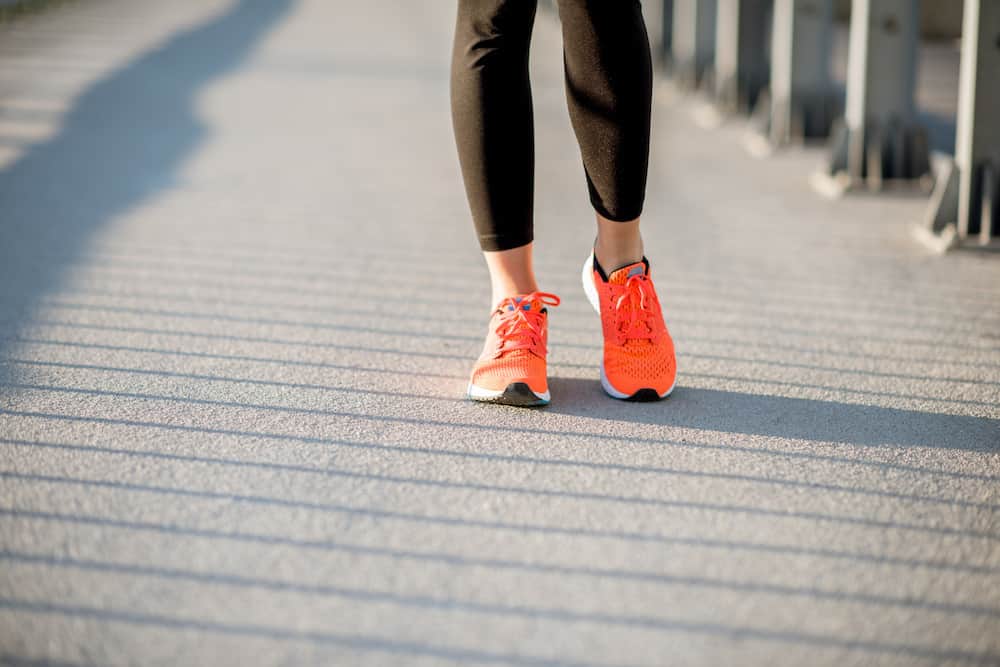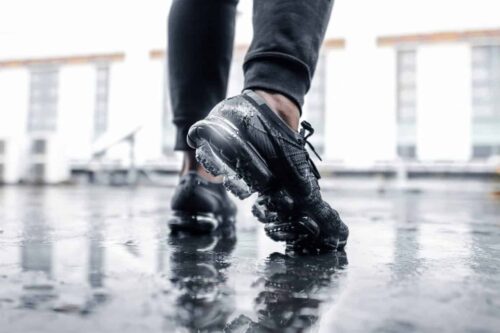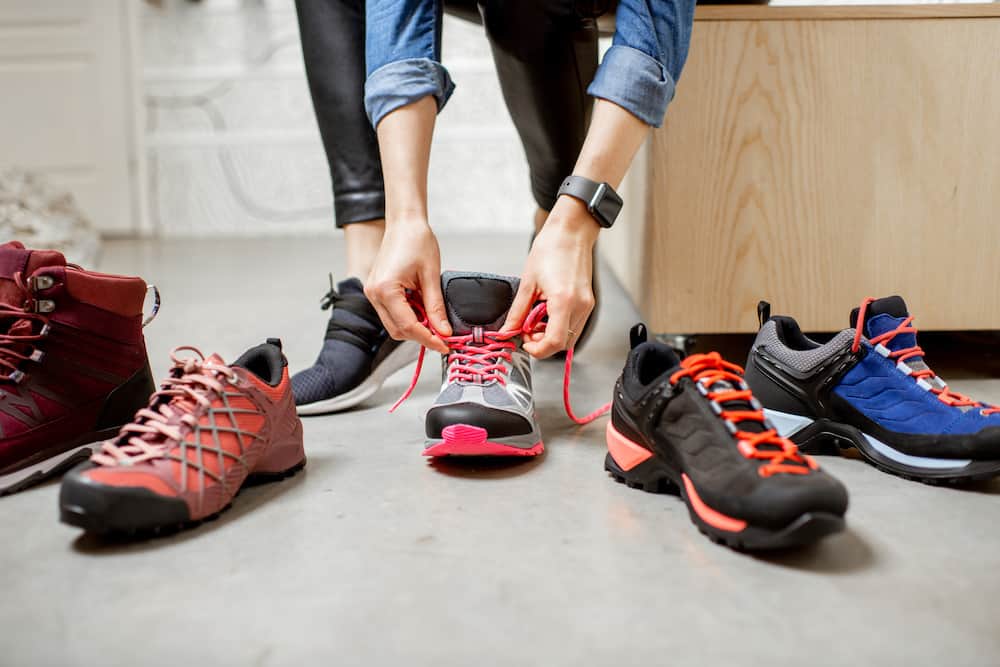Knowing how to break in running shoes is an essential skill for every runner.
In fact, regardless of the type of shoe you plan on buying, you should not forego this break-in period.
Basically, you will want your feet to get used to it before you do any major activity.
There is no shortcut to breaking in new running shoes.
You will want to take it slow so that they fully conform to the shape of your feet.
At the same time, you will have to make sure you’re choosing the right pair.
Important Reminders When Buying Running Shoes
If you don’t pick the right pair, breaking in your new shoes won’t do you any good, no matter how long you try to do so.
We understand your excitement, but you will want to take your time when choosing running shoes.
Here are some important reminders to ensure you pick the right pair for your feet:
1. Know your size.
Ended up with blisters trying to run in your new shoes? You probably picked the wrong shoe size.
It’s crucial for running shoes to be neither too small nor too big.
Your best bet is to wear the shoes in the store to check the fit before you decide on buying them.
Bring your running socks with you and wear them as you try out different shoes.
Feet also swells up when running, so it’s better to buy a shoe at the end of the day (when they are at their biggest) to get the right size.
2. Consider the shape of your feet.
There are different types of running shoes depending on the shape of your feet.
For instance, if you are flat-footed, you’ll find models made specifically for this kind of condition.
Failing to determine the condition of your feet and choosing the wrong shape will undoubtedly result in a lot of discomfort.
Worse, it can even lead to serious foot injuries.
Some models also have either a wide or narrow toebox, so keep that in mind too.
3. Your comfort is of the utmost importance.
Comfort is perhaps the most crucial part of choosing a running shoe.
Even if you manage to get the shape and size right, you will still fail if you don’t feel comfortable wearing it.
After all, not all running shoes are comfortable to wear.
Sometimes, you have to try multiple pairs to find the one that would fit your feet perfectly.
Do I Have to Break in Running Shoes?
Yes, all running shoes require a break-in period. You can use them immediately after buying, but don’t expect a comfortable run.
There’s even a high chance that you will be injured and sidelined for weeks, depending on the severity.
Spending two to three weeks breaking in running shoes is better than being sidelined for several months because of injury.

How to Break in Running Shoes
It’s very exciting to think about the adventures you will experience with your new shoe.
You might even want to test it out as soon as you get home.
More often than not, though, you will probably end up in pain if you don’t break them in first.
Unfortunately, breaking new running shoes is not as simple as wearing them for a couple of hours every day.
Here are tricks you can try to do this properly:
1. Walk Around the House
When trying to learn how to break in new running shoes, the first thing to do is to wear them inside the house.
There are a few reasons why you should do this:
- You can easily see the areas that would rub or irritate your skin.
- You can wear different socks until you find the one that would fit perfectly with your shoes.
- You still have a chance to return or exchange the shoe if it doesn’t fit you right since you didn’t use it outside.
Remember not to use them for running outdoors immediately after buying them. Doing so may result in injuries to your feet.
Again, your goal is to allow your shoes to conform to the shape of the feet.
Your feet can adapt easily, but it might take some time, depending on the shoes.
Try wearing the shoes for a few days as you do stuff around the house.
You can clean your room or simply walk up and down the stairs to get a good feel if they are indeed comfortable to wear or not.
If not, you can expect to experience the same discomfort once you start running with them on.
2. Take It Outside
Once the running shoes successfully passed the indoor test, the next step is to take them outside for a stroll.
Again, don’t start running yet. You can just walk or do a light jog to test them out.
Brisk walking is also an excellent way to check if there are other issues with the running shoe.
The goal of breaking in new running shoes is to prevent blisters and other injuries, so you will want to test them out like this for a few days.
Check if there are any discomforts as you walk because the terrain outside is different from inside your house.
3. Do a Test Run
Now that you’ve pretty much tested the running shoes both indoors and outdoors, the last and final step is to do a test run.
If you know how to break in new running shoes, you won’t have a problem in the test run.
After all, you’ve already checked the comfort and the fit from the first and second tests.
To take your new shoes for a test run, you can do a three-mile run in your neighborhood.
It’s not a good idea to immediately go on a long run when the shoe is still in its break-in period.
So, start with three miles and then increase it to five miles after a couple of days.
Obviously, don’t force yourself to run the whole day.
4. Run on a Treadmill
If you don’t want your shoes to get dirty before you use them for actual running, you can run on a treadmill instead.
Although running on a treadmill is completely different from running outdoors, it’s a good alternative if you don’t want to get them dirty yet.

How Long Does It Take to Break in Running Shoes?
As mentioned, breaking in running shoes would take around two to three weeks.
However, it would still depend on the type of running shoe you plan on using.
Some models would require a longer period, so you should pay attention to the shoe’s feel before using it on major runs.
After the break-in period, your shoes would be much more comfortable to wear.
Around this time, they have already conformed to the unique shape of your feet.
Injuries are inevitable, but you can minimize this risk if you break your shoes in properly before running in them.
How Do You Break in Stiff Running Shoes?
The process of breaking in stiff running shoes is the same as the regular one.
However, stiff shoes would usually require a longer break-in period.
If a regular running shoe needs two to three weeks, you might have to break in a stiff pair for about five to six weeks.
Conclusion
Learning how to break in running shoes is an absolute must, even if you’re not a professional runner.
In fact, even if you only plan to wear them for regular activities, you still need to get used to them before using them outdoors.
Some people might say that breaking in running shoes is not too important and you can wear them running as soon as they arrive.
What we can say to that is this: The break-in period of your shoes is always shorter than recovering from injuries.
Spending a few weeks breaking in your new shoes would be a much better option than experiencing serious injuries.














Thanks for sharing this great post here. It has been very informative and well-timed. I don’t normally wear trainers at all. I usually wear german para boots for all occasions all year round. But this is the one time of year that I do sometimes wear them and have recently been thinking of buying a pair because it’s been so hot the past few weeks here.
Hi, Kwidzin, and thank you.
Thank you for your kind words.
Great to hear about your benefit of the article too.
Don’t hesitate to contact me to help you with anything else or if you have any questions.
Hi, Sports send,
Thank you for sharing this great article, I just bought a new pair of running shoes, and I wondered how I could break them in. I have severe overpronation, so I always need to buy motion control shoes, which are much stiffer than regular running shoes. So my question is, will it takes more time to break them in? And is there another way to break in running shoes? I mean, maybe washing them will accelerate the break-in period?
Thank you very much!
Hi, Daniella, and thank you.
Thank you for your kind words.
Yes, it can take a little more time to break them (motion shoes), but not much difference.
But I wouldn’t wash it because it can damage the adhesive and the fabric.
I believe you could be interested in this post about Motion control running shoes. And there is one here which had some info about shoes for overpronation. I hope you like it!
Great to hear about your benefit of the article too.
Don’t hesitate to contact me to help you with anything else or if you have any questions.
And here I am, a sporter all my life, having had various types of sports shoes and never bothering to break them in. I can remember having had some mysterious injuries, and now I know what the cause is or could be. As I had never heard of breaking into sport’s shoes, I just started using them like normal, as soon as I bought them.
I can imagine, however, how important it will be to get the right running shoes, as you will burden your feet enormously. The right fit can save your feet and break in your shoes as well.
Hi, Jerry, and thank you.
Thank you for your kind words.
Yes, you are not the only ones who haven’t think about it. And it is understandable even so it is important to do it.
Great to hear about your benefit of the article too.